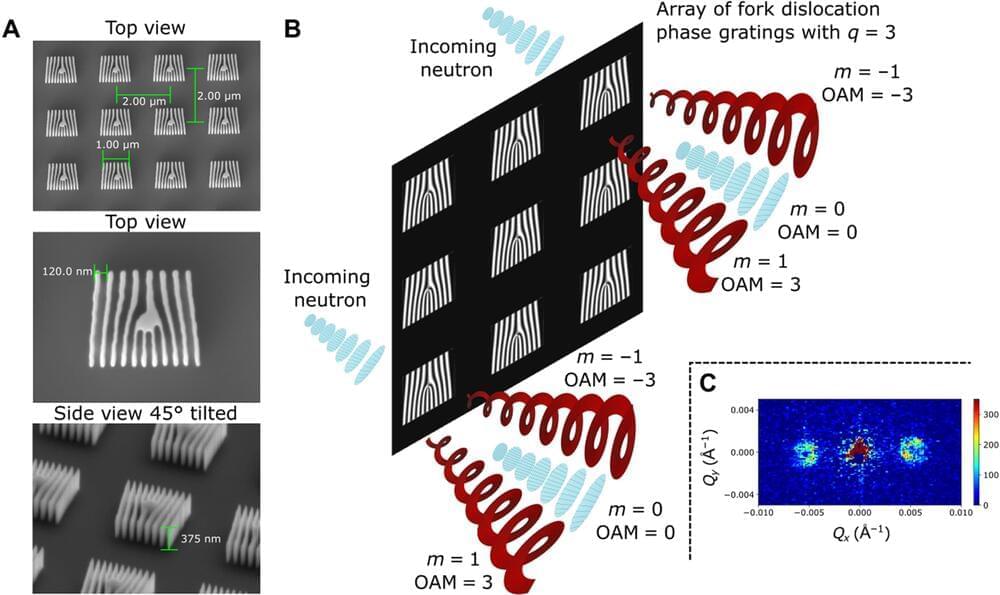Alphabet’s X unit spun up a tool that teaches code to write itself. It has been moved into Google Labs, signaling its growing importance.


Deep Learning AI Specialization: https://imp.i384100.net/GET-STARTED
AI News Timestamps:
0:00 New AI Robot Dog Beats Human Soccer Skills.
2:34 Breakthrough Humanoid Robotics & AI Tech.
5:21 Google AI Makes HD Video From Text.
8:41 New OpenAI DALL-E Robotics.
11:31 Elon Musk Reveals Tesla Optimus AI Robot.
16:49 Machine Learning Driven Exoskeleton.
19:33 Google AI Makes Video Game Objects From Text.
22:12 Breakthrough Tesla AI Supercomputer.
25:32 Underwater Drone Humanoid Robot.
29:19 Breakthrough Google AI Edits Images With Text.
31:43 New Deep Learning Tech With Light waves.
34:50 Nvidia General Robot Manipulation AI
36:31 Quantum Computer Breakthrough.
38:00 In-Vitro Neural Network Plays Video Games.
39:56 Google DeepMind AI Discovers New Matrices Algorithms.
45:07 New Meta Text To Video AI
48:00 Bionic Tech Feels In Virtual Reality.
53:06 Quantum Physics AI
56:40 Soft Robotics Gripper Learns.
58:13 New Google NLP Powered Robotics.
59:48 Ionic Chips For AI Neural Networks.
1:02:43 Machine Learning Interprets Brain Waves & Reads Mind.
WASP-39b could be key to finding much calmer, more habitable worlds.

Check out the on-demand sessions from the Low-Code/No-Code Summit to learn how to successfully innovate and achieve efficiency by upskilling and scaling citizen developers. Watch now.
Like Rodin’s The Thinker, there was plenty of thinking and pondering about the large language model (LLM) landscape last week. There were Meta’s missteps over its Galactica LLM public demo and Stanford CRFM’s debut of its HELM benchmark, which followed weeks of tantalizing rumors about the possible release of OpenAI’s GPT-4 sometime over the next few months.
The online chatter ramped up last Tuesday. That’s when Meta AI and Papers With Code announced a new open-source LLM called Galactica, that it described in a paper published on Arxiv as “a large language model for science” meant to help scientists with “information overload.”
The James Webb Space Telescope (JWST) has just scored another first: a detailed molecular and chemical portrait of a distant world’s skies.
The telescope’s array of highly sensitive instruments was trained on the atmosphere of a “hot Saturn”—a planet about as massive as Saturn orbiting a star some 700 light-years away—known as WASP-39 b. While JWST and other space telescopes, including Hubble and Spitzer, have previously revealed isolated ingredients of this broiling planet’s atmosphere, the new readings provide a full menu of atoms, molecules, and even signs of active chemistry and clouds.
“The clarity of the signals from a number of different molecules in the data is remarkable,” says Mercedes López-Morales, an astronomer at the Center for Astrophysics | Harvard & Smithsonian and one of the scientists who contributed to the new results.

For the first time in experimental history, researchers at the Institute for Quantum Computing (IQC) have created a device that generates twisted neutrons with well-defined orbital angular momentum. Previously considered an impossibility, this groundbreaking scientific accomplishment provides a brand new avenue for researchers to study the development of next-generation quantum materials with applications ranging from quantum computing to identifying and solving new problems in fundamental physics.
“Neutrons are a powerful probe for the characterization of emerging quantum materials because they have several unique features,” said Dr. Dusan Sarenac, research associate with IQC and technical lead, Transformative Quantum Technologies at the University of Waterloo. “They have nanometer-sized wavelengths, electrical neutrality, and a relatively large mass. These features mean neutrons can pass through materials that X-rays and light cannot.”
While methods for the experimental production and analysis of orbital angular momentum in photons and electrons are well-studied, a device design using neutrons has never been demonstrated until now. Because of their distinct characteristics, the researchers had to construct new devices and create novel methods for working with neutrons.

The new type of home could address housing shortages.
On Monday, the University of Maine Advanced Structures and Composites Center (ASCC) unveiled the first 3D-printed house made entirely out of bio-based materials called BioHome3D, according to a press release by the institution.
Fully recyclable and highly insulated
The new structure consists of a 600-square-foot prototype featuring 3D-printed floors and walls as well as a roof made of wood fibers and bio-resins. The house is fully recyclable and highly insulated and its development produced a limited amount of waste due to the precision of the printing process.

The agency’s sent a tiny lunar lander aboard NASA’s Artemis I moon mission.
Japan will have to wait a little longer to perform its historic first lunar landing. That’s because a tiny Japanese moon lander that hitched a ride aboard NASA’s Artemis I moon mission has failed to make it to the lunar surface, a report from Space.com reveals.
Officials working on the OMOTENASHI moon spacecraft announced on Twitter that they had failed to pick up the CubeSat’s signal ahead of a planned lunar landing attempt.
Meet OMOTENASHI: Japan’s tiny lunar lander.
JAXA
That’s because a tiny Japanese moon lander that hitched a ride aboard NASA’s Artemis I moon mission has failed to make it to the lunar surface, a report from Space.com reveals.

NASA’s Imaging X-ray Polarimetry Explorer allowed scientists to probe a distant blazar, shedding new light on the cosmic giants.
Scientists made observations of bright, shining jets of particles shooting out of a supermassive black hole and they published their findings in a paper in Nature.
Investigating a blazar with state-of-the-art instruments.
Pablo Garcia (NASA/MSFC)
The observations shed new light on the high-energy mechanisms of black holes and will help to improve existing computer models of the cosmic giants at the center of most of the galaxies in the observable universe. They also shed new light on the energy mechanisms of blazars, some of the most mysterious objects in the cosmos.

Some of them could fertilize ecosystems, while others could have pathogenic potential.
More and more glaciers are melting as the Earth heats up, posing a multitude of threats to humanity. From rising sea levels to increased coastal erosion, the record speed at which the world’s ice sheets are melting has the potential to disrupt societies globally.
Now scientists from Aberystwyth University warn that hundreds of thousands of tonnes of microbes could leak into lakes and rivers as the world’s glaciers melt due to climate change, according to an institutional press release.